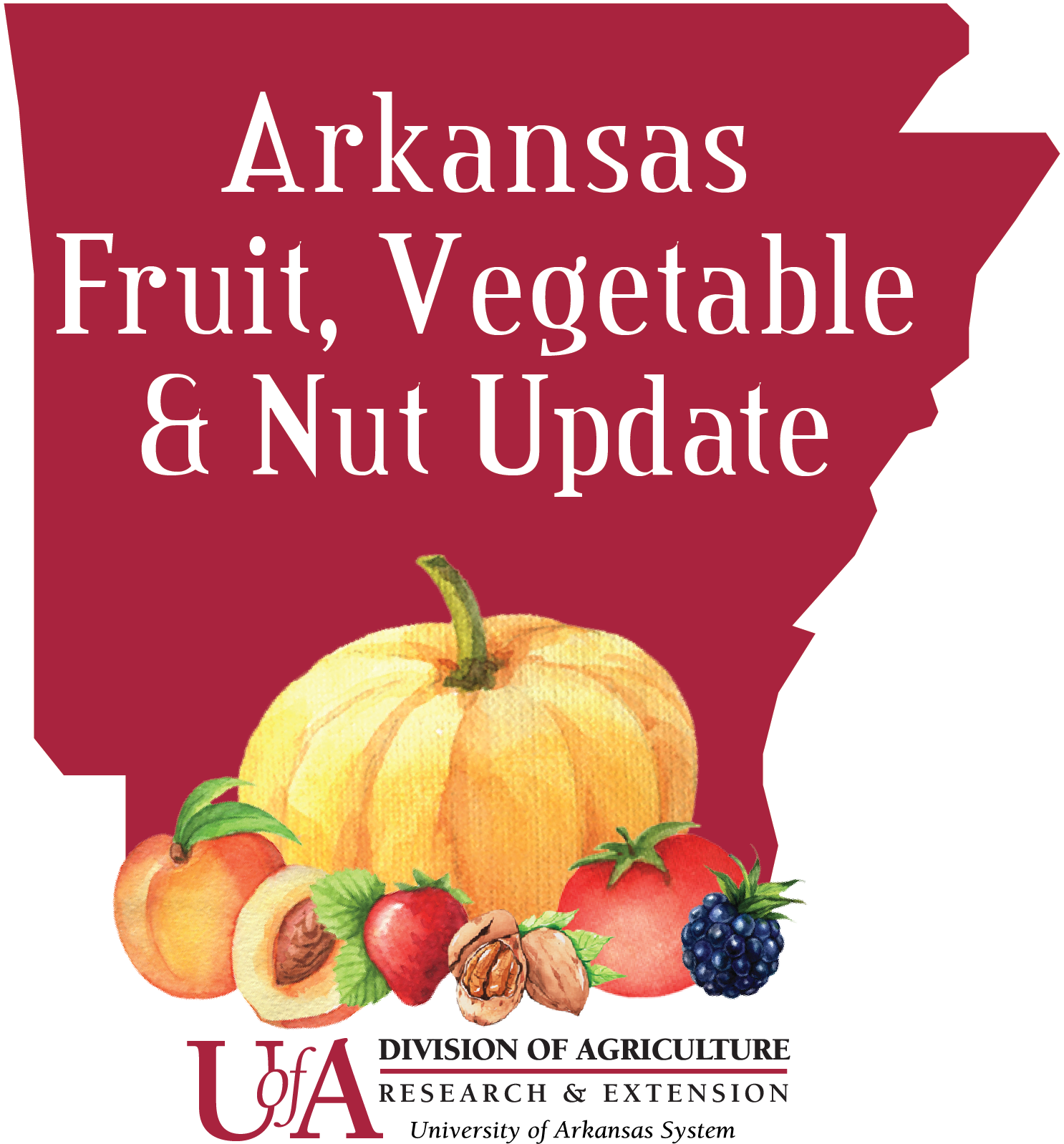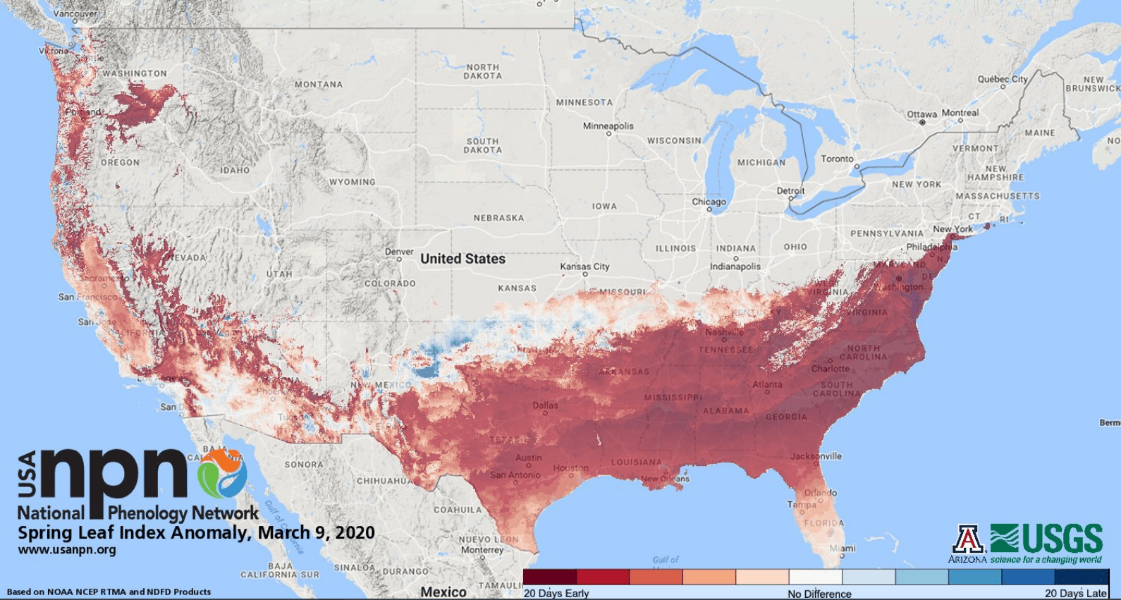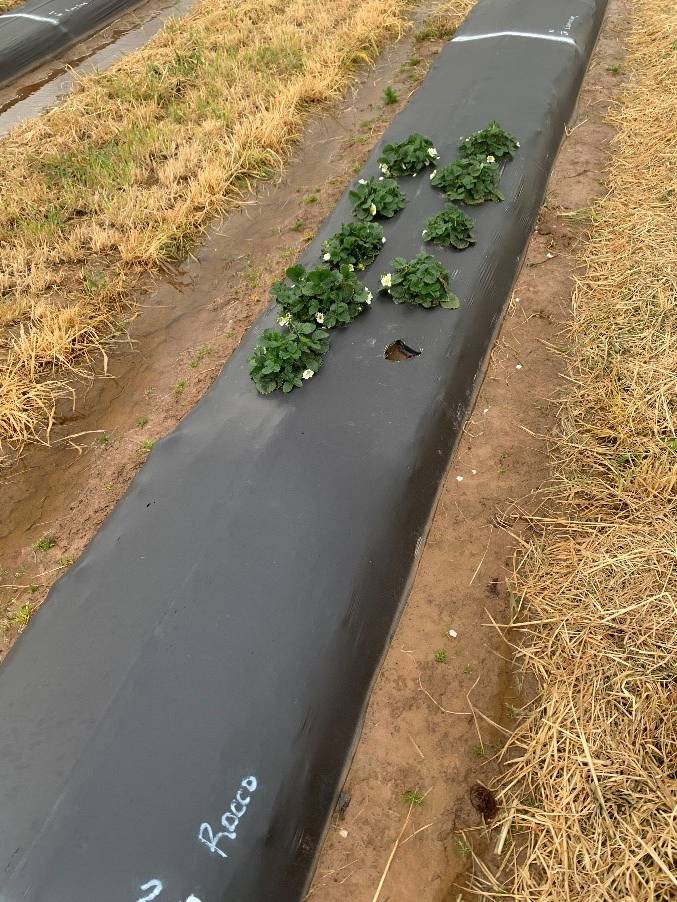
Pre-Bloom Strawberry Disease Management
Pre-Bloom Strawberry Disease Management
Concerned about the warm weather and rain in the forecast? Below are some recommendations for managing diseases in strawberry before bloom.
** If you are in Arkansas (or closely surrounding areas) and would like to have samples sent in to test for Botrytis or anthracnose resistance on your farm, please send me an email at acato@uada.edu or give me a call at 479-249-7352.
Well-timed protectant fungicides to reduce spore buildup and infection of susceptible plant parts is a critical tool many strawberry growers utilize when considering disease management. The applications should be made based on two main decision factors: plant phenology (growth of plants based on climate) and the forecasted weather. Strawberry plants are putting on new growth across much of the state, and we’ve had some warning that this was coming early from simple observations of warm temperatures, the National Phenology Network (pictured below), and of course the famous groundhog Punxsutawney Phil who predicted an early spring this year, although he’s been less reliable than a coin flip at around 35% accuracy. We even have already started significant flowering amongst much of our variety trial at Kibler, AR, mostly in the earlier varieties.
National Phenology Network Leaf Index indicated early spring growth of crops and other plants in Arkansas.
Rocco strawberry at Kibler, AR on March 10th with about 10-12 days of new spring growth including flowers. Picture by Alden Hotz.
It’s important to consider growth that’s ahead of schedule because this often leads to freeze injury in flowers or potentially the crown if we get another freeze event, but also because we need to consider protectant fungicides earlier. In a normal year we should begin our protective fungicides when about 10% of plants are putting on blooms that we plan to protect through harvest, as this is the most susceptible stage to Botrytis and Anthracnose Fruit Rot. However, these diseases can infect vegetative material and freeze damaged blooms when ideal conditions persist, which leads to increased spore production (disease pressure) and potentially Botrytis crown rot.
More than just considering temperature alone, we need to focus on rainfall and leaf-wetness in conjunction with temperature. These two diseases can occur at temperatures between 60-80 degrees (Botrytis prefers 60-80 and anthracnose prefers 80), but in prolonged periods of leaf-wetness (which we can predict by rainfall or excessive humidity/heavy dews) infection can occur at higher rates at lower temperatures. When we take a look at our forecast (pictured below for Little Rock, AR) we can predict that excessive leaf-wetness will be a concern, and that temperatures are ideal for over half of the rainy days. This means that our strawberry plants are at a high-risk in the coming week for a buildup in plantings of spores for Botrytis and even anthracnose, and are potentially at risk for Botrytis crown rot in plantings where freeze damaged blooms were not removed.
Forecast for Little Rock, AR from March 10th-March 19th indicating a high risk of disease in strawberry due to both above average temperatures and excessive leaf-wetness.
Pre-bloom Management of Botrytis and Anthracnose Fruit Rot
If multiple days of rain (24-32 hours of expected leaf-wetness) is in the forecast along with warm temperatures (60-80°F), begin your spray program before bloom starts. An application of captan alone or captan + Rovral® can inhibit infection and reduce the overall number of spores present, which will ultimately lead to less infection during flowering. Additionally, any freeze damage blooms that are present could be infected with Botrytis and lead to Botrytis crown rot, although the upcoming forecast does not predict an impending freeze that would increase that risk. One thing to remember is that Rovral® should not be used if fruiting flowers are present, and do not make more than one application per season.
When considering the heat and rain in the upcoming forecast, it is vital that we start getting these protectant fungicides out. Many of the strawberry plantings in the state are likely to start flowering soon, and therefore are at a high risk of infection by spores currently in plantings. If you are using captan alone, try to get it out just before a major rain event and then again just after, as it is not a very rain fast product and will wash off easily. Once flowering begins and systemic fungicides are added in to the mix, such as switch, pristine, etc., better rain fastness can be expected.
Soil-borne Disease Management
If you are at-risk for soil-borne diseases based on previous confirmation on your farm, or if you have been growing strawberry in the same place for multiple years, a drip application of Ridomil Gold® may be necessary. At-risk fields should consider these applications at planting in the fall, when new growth starts in the early spring, and just before harvest. Diseases such as Phytopthora root and crown rots, or leather rot thrive in wet conditions, which is where many of us will be after the next week. Only 3 applications can be used a year of this material, so it is important properly time applications for maximum effectiveness.
Getting the timing down on fungicide applications is critical to preventing disease in strawberry. Many of the diseases we deal with don’t show symptoms until fruit is ripening, whereas infection occurred during flowering or even before bloom. Understanding proper timings and being ready to begin your spray program early based on the crop phenology and forecasted weather is critical for achieving profitable yields in commercial plasticulture strawberry. For most people in the state this year, this is going to mean getting 1-2 applications out this week if possible, and keeping with a schedule all the way through bloom.
For questions about which fungicides will be effective beginning at bloom, consult the 2020 Southeast Regional Strawberry Integrated Pest Management Guide.
If you are in Arkansas (or closely surrounding areas) and would like to have samples sent in to test for Botrytis or anthracnose resistance on your farm, please send me an email at acato@uada.edu or give me a call at 479-249-7352.
Fungicide Selection for Botrytis and Anthracnose Management as found in the 2020 Southeast Regional Strawberry Integrated Pest Management Guide.
| Product | FRAC Group | BFR | Botrytis Resistance | AFR |
| Captan; Captec | M04 | G | None | G |
| CaptEvate | M04 + 17 | E | Prevalent for 'Elevate' | G |
| Thiram | M03 | G | None | G |
| Fracture | BM01 | P | No data | No Data |
| Topsin M | 1 | Not effective | Widespread | Not effective |
| Rovral | 2 | G | Prevalent | Not effective |
| Tilt; generics | 3 | Not effective | Not applicable | F |
| Fontelis | 7 | E | Prevalent | F |
| Kenja | 7 | E | NOT Prevalent | Not effective |
| Scala | 9 | G | Prevalent | Not effective |
| Pristine | 7 + 11 | G | Prevalent | E |
| Merivon | 7 + 11 | E | Prevalent | E |
| Luna Sensation | 7 + 11 | E | NOT Prevalent | E |
| Cabrio | 11 | F | Widespread | E |
| Abound | 11 | F | Widespread | E |
| Intuity | 11 | F | No Data | P |
| Switch | 12 + 9 | E | NOT Prevalent | G |
| Elevate | 17 | E | Prevalent | Not effective |
| Ph-D, OSO | 19 | G | NOT Prevalent | G |
*Resistance issues to FRAC 11 fungicides in the AFR pathogen have been reported in multiples states. Problems tend to be plant-source associated.


